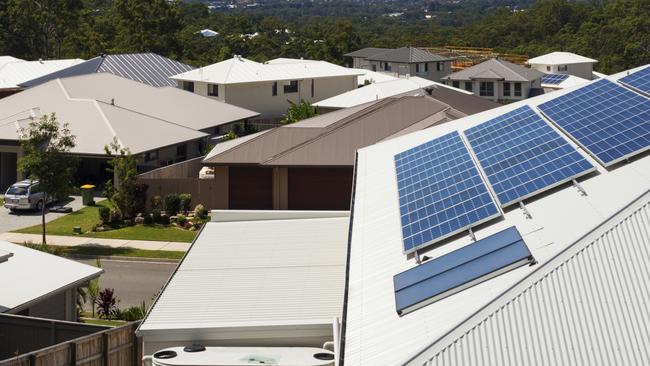Plan to allow households to sell power from solar panels to highest bidder
HOUSEHOLDS with solar panels will be able to sell power to the national grid in a way that responds to price signals, so they can make the most money, under a new proposal.
SA News
Don't miss out on the headlines from SA News. Followed categories will be added to My News.
- Creation of a state energy target likely to drive up electricity costs
- Federal government attempts to intervene in looming power price surge
- SA electricity crisis: Government unveils $550 million power plan
- Power dossier: All you need to know about SA energy generation
- Sunny forecast for Port Augusta solar jobs
HOUSEHOLDS with solar panels will be able to sell power to the national grid in a way that responds to price signals, so they can make the most money, under a new proposal.
The Australian Energy Market Commission (AEMC) has proposed new market conditions that mean household will be able to sell it to whoever values it the most at a particular point in time.
This could include a local network business or the wholesale market and would mean households would not have to be paid only current feed-in tariffs.
Torrens Island: AGL to unveil new power station plan
It could also help electricity networks manage peaks in demand that threaten to cause blackouts in South Australia as soon as next summer.
By incentivising households to feed their stored energy into the grid, it could reduce the need to new and expensive large-scale generators to be built.
A separate AEMC report released last month noted that in the next 10 years, rooftop solar panels could cater for the minimum power demand in SA.
It comes as chief scientist Alan Finkel prepares to hand down his report into the national energy market to the nation’s leaders on Friday

The Coalition has already ruled out introducing an Emissions Intensity Scheme which puts in place a baseline for allowable tonnes of CO2 output per megawatt hour of electricity.
Any generators producing lower emissions earn “credits” that could be sold to those producing CO2 above the baseline.
Dr Finkel is understood to instead recommend a Low Emissions Target that would place restrictions around the amount of energy generated from sources considered high emissions.
The AEMC proposal was a response to an increase in distributed energy resources which, in addition to rooftop solar, includes a range of smart technologies such as battery storage, electric vehicles and smart household appliances, such as refrigerators and dishwashers.
AEMC chairman John Pierce said as distributed energy resources continued to become smarter and cheaper there would be an acceleration in consumer uptake.
“We need to put consumers in the driving seat — giving them the choice about how to optimise the value of their household’s or business’s energy investments,” he said.
“We need a way to allow consumers and their retail energy service providers to determine where they can get the most value at any point in time.
“As an example, for consumers this means that if you want to use the electricity from your solar panels or your battery storage, you can, and if you don’t need to use that electricity at a particular time, you can sell it to whoever values it the most.”
Not only would the changes to the market allow household to earn more cash from their rooftop solar but they could also reduce their electricity bills through smart household appliances, such as refrigerators and dishwashers, which could respond to short-term changes in price signals.
The report identified a number of changes to the market and technology needed for the proposal to become reality, including:
COST-reflective network tariffs, due to roll out later this year, which would give consumers more accurate price signals.
INVESTMENT in smart IT and communication infrastructure so network businesses can better assess the technical impacts of distributed energy resources.
A CONSISTENT method of distributed energy resources, including rooftop solar to the grid to avoid onerous requirements, which can increase costs for people considering feeding their energy in.
Submissions on the draft report are open until July 4 and the final report is due to be published in August this year.
Opposition energy spokesman Mark Butler said Labor would be willing to consider a LET if it was part of an overall policy that would endure.
“We will keep an open mind about this. But we are not going to pretend that this is not a second best option,” he told ABC radio this morning.
“What you have seen over the last 12 months or so is an extraordinary consensus around an Emissions Intensity Scheme.
“Pretty much every business group in the country have said that this (an EIS) is the first best option moving forward.
“But Malcolm Turnbull has been unable, or unwilling to carry that argument through the Coalition Party room.
“So the position we find ourselves in as a country is considering an alternative mechanism to the one that everyone has said is the best option for Australia.”


